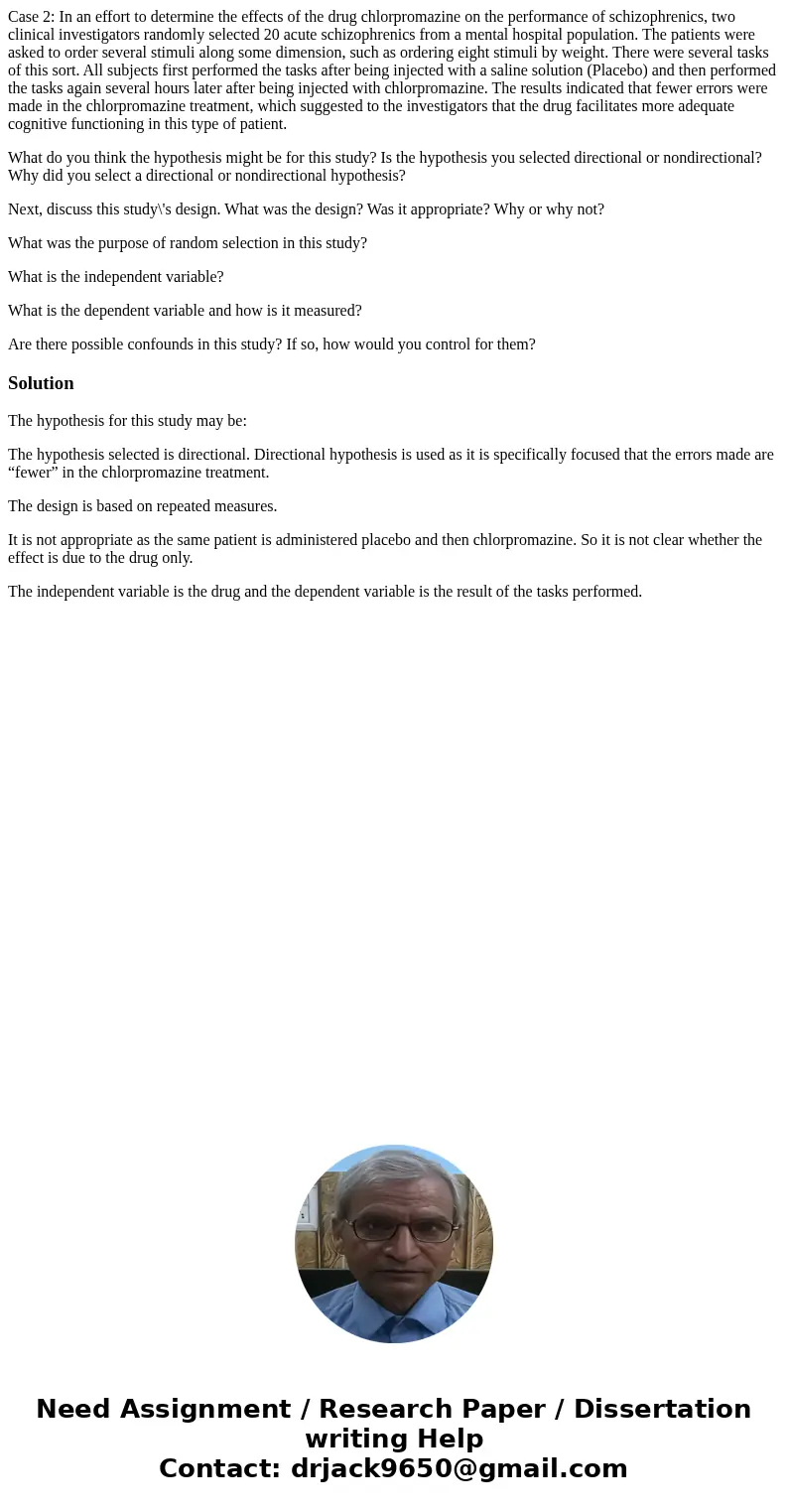Case 2 In an effort to determine the effects of the drug chl
Case 2: In an effort to determine the effects of the drug chlorpromazine on the performance of schizophrenics, two clinical investigators randomly selected 20 acute schizophrenics from a mental hospital population. The patients were asked to order several stimuli along some dimension, such as ordering eight stimuli by weight. There were several tasks of this sort. All subjects first performed the tasks after being injected with a saline solution (Placebo) and then performed the tasks again several hours later after being injected with chlorpromazine. The results indicated that fewer errors were made in the chlorpromazine treatment, which suggested to the investigators that the drug facilitates more adequate cognitive functioning in this type of patient.
What do you think the hypothesis might be for this study? Is the hypothesis you selected directional or nondirectional? Why did you select a directional or nondirectional hypothesis?
Next, discuss this study\'s design. What was the design? Was it appropriate? Why or why not?
What was the purpose of random selection in this study?
What is the independent variable?
What is the dependent variable and how is it measured?
Are there possible confounds in this study? If so, how would you control for them?
Solution
The hypothesis for this study may be:
The hypothesis selected is directional. Directional hypothesis is used as it is specifically focused that the errors made are “fewer” in the chlorpromazine treatment.
The design is based on repeated measures.
It is not appropriate as the same patient is administered placebo and then chlorpromazine. So it is not clear whether the effect is due to the drug only.
The independent variable is the drug and the dependent variable is the result of the tasks performed.

 Homework Sourse
Homework Sourse